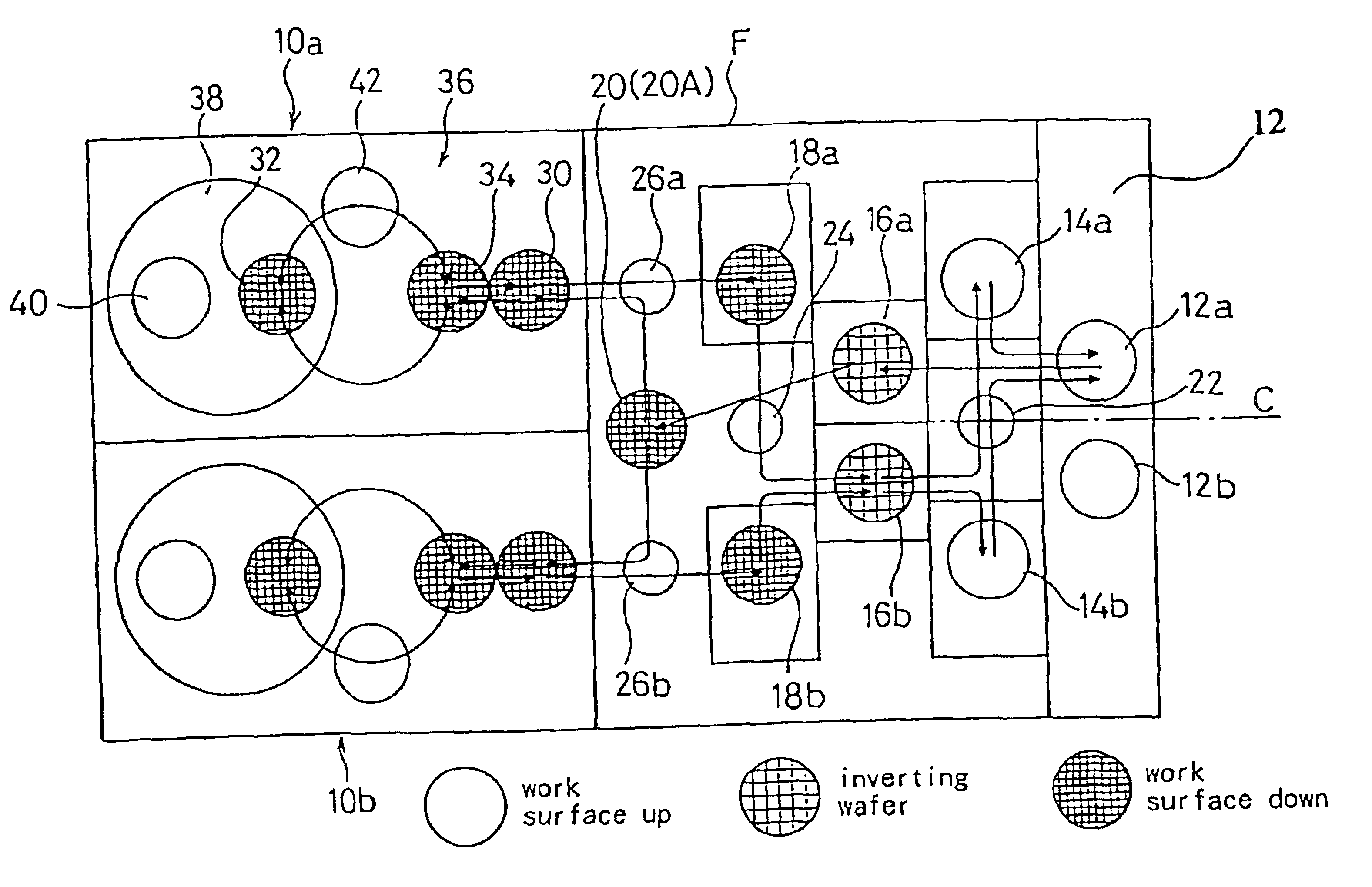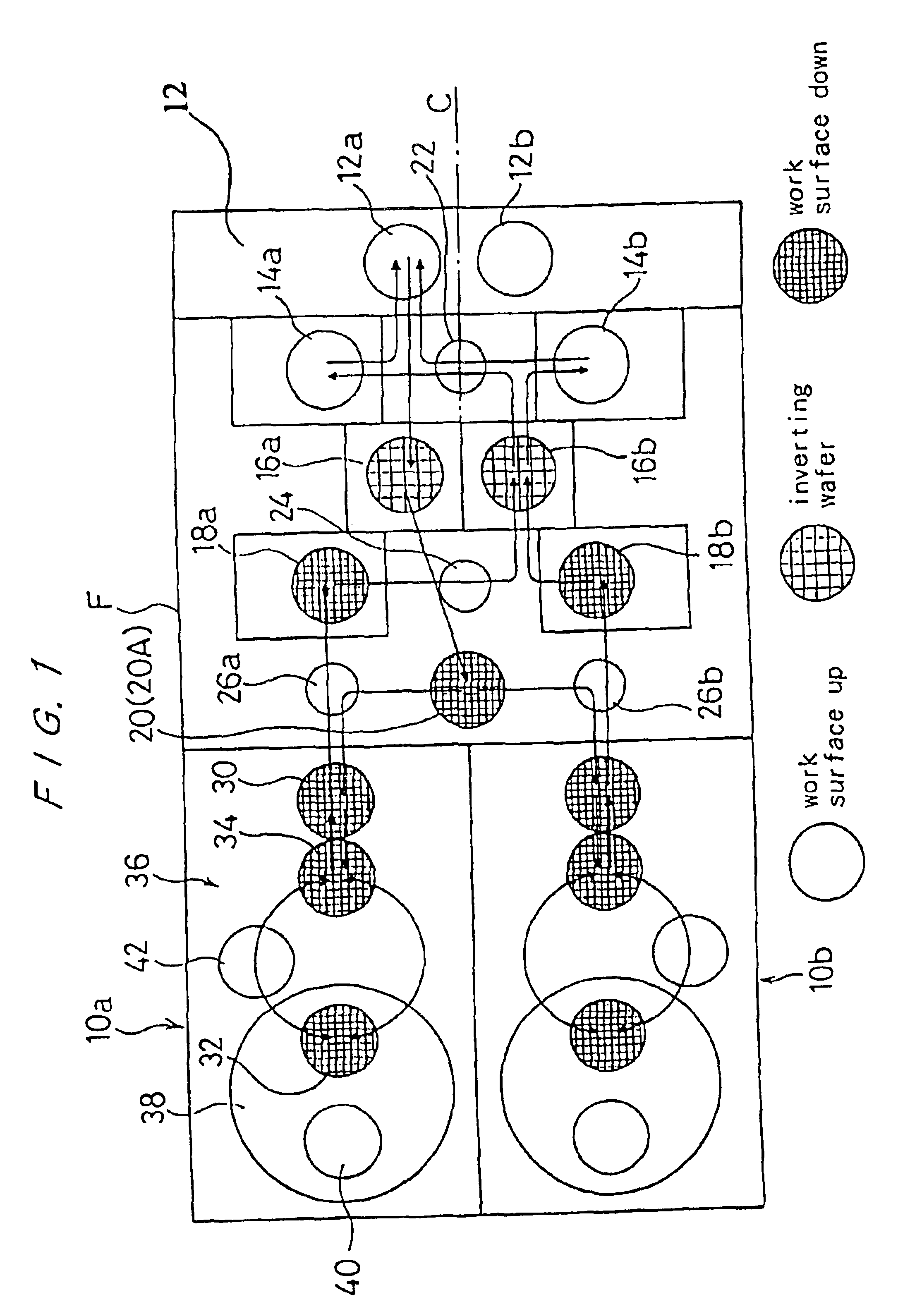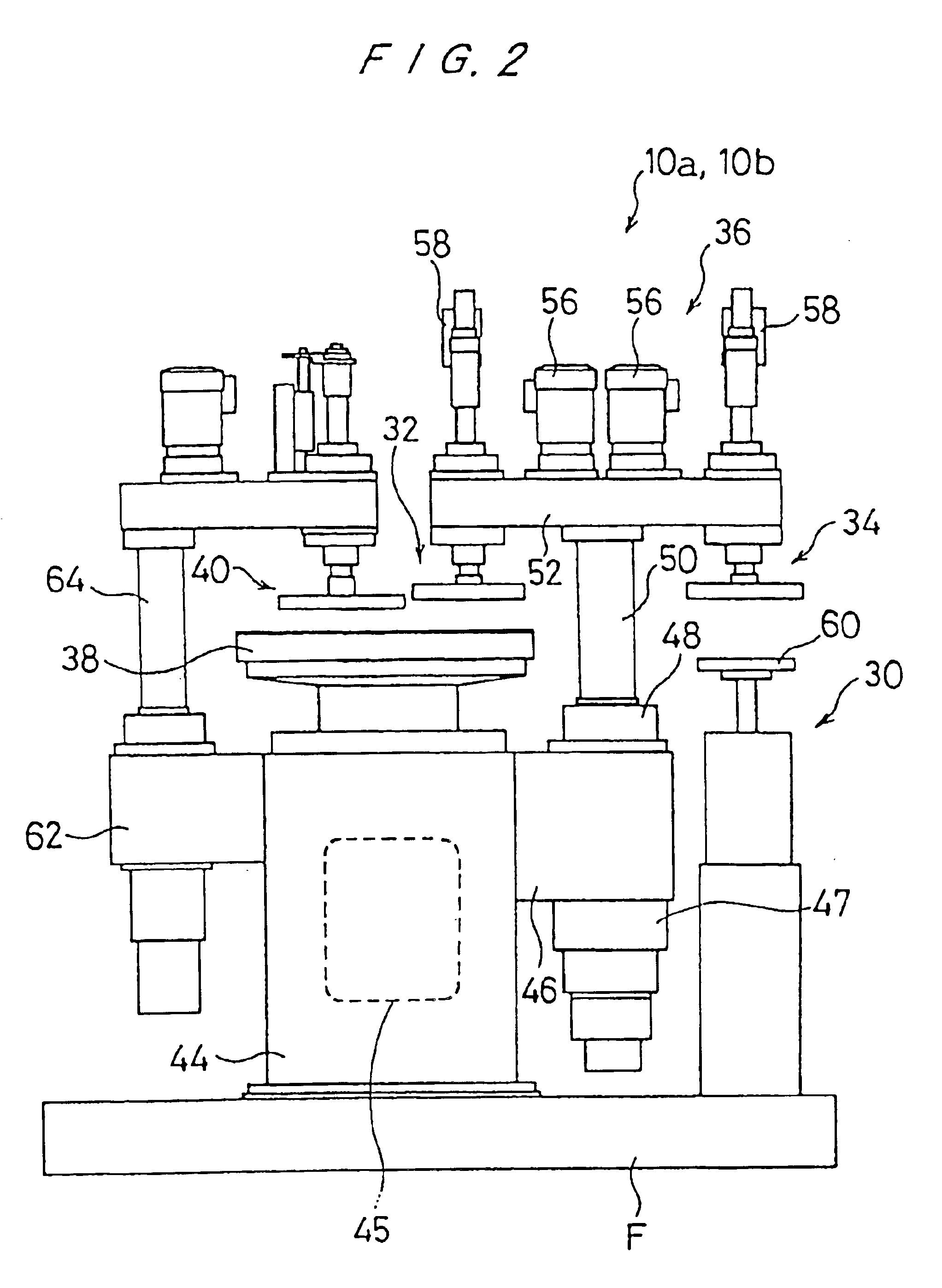Polishing apparatus
a technology of polishing apparatus and turning table, which is applied in the direction of lapping machines, manufacturing tools, and abrasive surface conditioning devices, etc., can solve the problems of existing polishing apparatus, idle time of turntables, and inability to use, and achieve the effect of compact and economical apparatus
- Summary
- Abstract
- Description
- Claims
- Application Information
AI Technical Summary
Benefits of technology
Problems solved by technology
Method used
Image
Examples
Embodiment Construction
[0041]In the following, preferred embodiments will be presented with reference to the drawings.
[0042]FIG. 1 is a schematic illustration of a first embodiment of the present polishing apparatus. The present polishing apparatus is contained in a rectangular-shaped floor space F, and the constituting elements arranged on the left / right sides are disposed in a symmetrical pattern with respect the center line C. Specifically, at one end of the rectangular-shaped floor, a pair of polishing units 10a, 10b are disposed symmetrically on the left and right side, respectively, and a loading / unloading unit 12 mounting a pair of cassettes 12a, 12b for storing wafers are disposed on an opposite end of the floor. Between these two ends, there are disposed, beginning from the loading / unloading unit side, a pair of secondary cleaning units 14a, 14b, a pair of wafer inverters 16a, 16b, a pair of primary cleaning units 18a, 18b, and one temporary storage station 20. The pairs of primary and secondary ...
PUM
 Login to View More
Login to View More Abstract
Description
Claims
Application Information
 Login to View More
Login to View More - R&D
- Intellectual Property
- Life Sciences
- Materials
- Tech Scout
- Unparalleled Data Quality
- Higher Quality Content
- 60% Fewer Hallucinations
Browse by: Latest US Patents, China's latest patents, Technical Efficacy Thesaurus, Application Domain, Technology Topic, Popular Technical Reports.
© 2025 PatSnap. All rights reserved.Legal|Privacy policy|Modern Slavery Act Transparency Statement|Sitemap|About US| Contact US: help@patsnap.com



